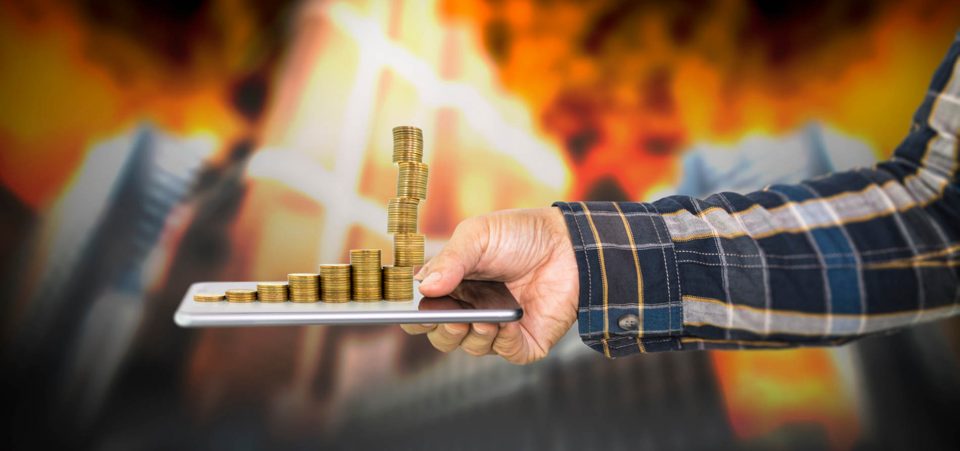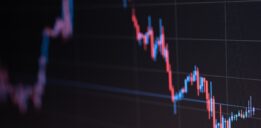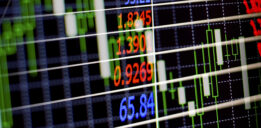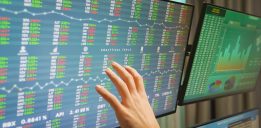Similarities Between Overvalued Stocks of 2017 and the Pre-Stock Market Crash Era of 2000 & 2008
Are we heading towards another stock market crash of 2008? Too many toxic—meaning overvalued—stocks make for realistic crash and recession scenarios. There will only be a market correction. Indeed, there are signs that the markets have been flashing for some time. You should interpret these as a warning that another financial crisis is coming.
There’s no question that a stock market crash is coming. But will it be like the stock market crash of 1987, the crash of 2000, or will it be like the crash of 2008? As for effects, financial crashes tend to be predictable. They include mass hysteria, layoffs, and a major recession. Those elements have followed every major financial catastrophe. But each crash has unique causes, just as each war also rises from a unique set of circumstances. If all market crashes had the same triggers, they would be far more easily predictable.
Yet, a possible, if not probable, stock market crash of 2017 scenario has become rather evident. There are a few key elements that the current market situation shares with the 2000, 2008, or even 1929, market collapses. The signs are interrelated but for the sake of analysis, they can be explained under three general similarities.
- There exists an excess of confidence. Let’s call this exuberance.
- There is a combination of high debt and cheap credit, which is about to run out. The tap could be shut as a result of a central bank decision or the realization that there aren’t enough funds to cover the debt.
- One of the key drivers of the aforementioned market exuberance—whether a technology such as with the dot-com era or a special financial “product” such as the sub-prime derivative—fails.
The Elements of the Next Crash Are in Place
Like any good bonfire, the various logs, twigs, papers, or other flammables are assembled. But there’s always the need for a spark to set the whole thing alight. So it is with the stock market in 2017. We have many elements ready to come together and ignite. We haven’t had the trigger yet.
What could the trigger be? That’s the big question. One of the reasons it’s a big question is that there is a multitude of candidates to serve as the match. Meanwhile, the excessively high investor optimism in an era of Cuban Missile Crisis-like nuclear tensions and WW3 triggers in the Middle East suggests that investors aren’t paying attention.
It could be that investors get tired of the technology stocks, wondering why their valuations have reached such highs. On September 25, just as Vesuvius sent tremors a few years before erupting and covering Pompeii for over 1,400 years, the tech sector showed cracks in the system. Wall Street fell for the third straight day in a row on September 25. The NASDAQ suffered due to unusual, but not unexpected, weakness in the technology sector.
Rising Stock Market Valuation Is a Harbinger for a 2008-Style Stock Market Crash
In 2008, the market crashed when Lehman Brothers Holdings Inc. went bankrupt from excessive exposure to sub-prime derivatives. The crash was the black swan that set off all the other pieces of the financial dominos that fell. In 2008, there was also a high debt accumulation due to the sub-prime loans and derivatives of unscrupulous banking practices. The appearance (false, it turns out) of prosperity, as the media praised the rising numbers of new homeowners in the early-mid-2000s, sustained market confidence. Few could see the crash coming.
In 2017, a harbinger of the subprime crash comes from the tech sector and the fact that there’s plenty of debt at the government level ($20.0 trillion) and the private/household level. All it takes is one interest rate hike too many to send many families and companies on the edge of bankruptcy. We just don’t call it subprime debt any longer.
But, if there is one truly rising market valuation that’s a harbinger for another major crash, it’s the tech sector. Take Snap Inc. (NYSE:SNAP) as an example. It reminds me of Frank Sinatra’s That’s Life: “You’re riding high in April. Shot down in May.”
Snap was riding at $27.00/share high in March and shot down to $13.22 in September. What happened? Simply, there was too much exuberance and not enough substance, let alone critical thought. So, there’s another element in common between all the financial crises: overvalued stocks.
Therefore, a rough analysis would suggest that the answer to the question, “When will the market crash?” becomes almost self-evident. Many tech stocks, not all, have gained too much, too fast. They are heading for a digital tech mega-cap carnage on Wall Street. The group of stocks generally classified as FAANG—Facebook Inc (NASDAQ:FB), Apple Inc. (NASDAQ:AAPL), Amazon.com, Inc. (NASDAQ:AMZN), Netflix, Inc. (NASDAQ:NFLX), and Google, now known as Alphabet Inc (NASDAQ:GOOGL)—may not be the first to fall. But others aspiring to join that club could easily collapse.
Silicon Valley has pushed the Dow and other indices to the current records by, possibly, as much as 35% since the Trump rally began last November. When these stocks change course, and all it takes is a “disappointing” quarter, their Dow Jones stratospheric dreams could crash into the ninth circle of financial hell.
Last July, Goldman Sachs Group Inc (NYSE:GS), of all banks, set off the first warning. It claimed the tech stocks were experiencing another 2000 style tech bubble. (Source: “Goldman: The Last Time The Market Acted Like This Was At The Tech Bubble Peak,” Zero Hedge, June 10, 2017.)
The tech stocks and the Dow have risen way up since then, making the coming bubble explosion that much louder. The detonators are on their way. They could come from the Federal Reserve or courtesy of Kim Jong-un in North Korea.






